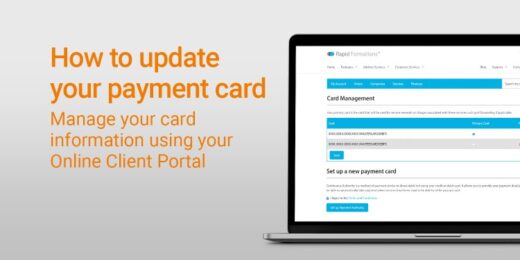In a business world that’s rapidly evolving, dropshipping has emerged as a beacon of possibility for budding entrepreneurs.
If you’re looking to launch your own business from the comfort of your home, without the worry of inventory and postage, then dropshipping may just be the perfect solution for you.
In this guide, we’ll explore everything you need to know about starting your own dropshipping business. Let’s dive straight in.
What is dropshipping?
Dropshipping allows you to run your store without ever holding any stock. Once you’ve made a sale, your supplier will ship your products on your behalf from their warehouse, direct to your customer’s doorstep. This means you’ll never need to worry about storing, packaging, or shipping your products; leaving you free to operate from anywhere in the world, at any time.
How does dropshipping work?
There are three key components to the dropshipping business model: the manufacturer/supplier, the retailer (you), and the customer. Manufacturers create and maintain inventory, take care of shipping, manage product replacements, and restock items. They sell products to you, the retailer, at wholesale prices.
As the retailer, your role involves marketing and selling the manufacturer’s products on your website, typically under your own brand. You’re responsible for product selection, marketing efforts, setting profitable prices, and covering shipping costs.
Customers purchase the products directly from you, and any enquiries or issues they have are directed to you as the retailer they bought from.
How do I start my dropshipping business?
So now that we’ve covered what dropshipping is, let’s take a look at the steps involved with setting up your business:
1. Choose your dropshipping idea
The first step on your dropshipping journey will be to spend time pinning down the best idea for your business and the type of products you want to supply.
Niche products not only have a more passionate customer base, but they can also help you to stand out from the competition, making it easier to identify and target your ideal audience. Some examples of niche dropshipping products might include:
- Pet supplies for specific breeds
- Sustainable and eco-friendly products
- Customised jewellery
- Exercise gear for gym-goers
The list goes on. Research the market, look into trending products using tools like Google Trends, and take into account your own interests and expertise to help navigate your decision. Once you have an idea in mind, you should consider factors like current market demand, existing competition, and the potential for scalability.
2. Source a supplier
Selecting a reliable dropshipping supplier is a critical step in setting up your business. Once you have nailed down what products you want to sell, you’ll need to find a supplier that can live up to your vision and provide a high-quality service. After all, this will be a crucial element in making your business a success.
Start your search by evaluating potential suppliers in your chosen niche. Some of the most popular dropshipping providers include AliExpress, SaleHoo, and BigBuy; each of which enables you to connect your e-commerce platform to various manufacturers and wholesale products.
Look for factors such as product quality, reliability, shipping times, and customer service responsiveness. It’s essential to establish a strong partnership with your supplier, to maintain a seamless order fulfilment process and foster trust with your customers.
3. Set up your e-commerce store
Once you’ve chosen your niche and secured a reliable supplier, it’s time to build your online store. Selecting the right e-commerce platform is an important step, as it will serve as your business hub and be the first impression potential customers have of your brand.
A well-designed and user-friendly store can help establish a strong brand identity and establish credibility with visitors, so it’s crucial to get it right. Some popular e-commerce platforms include Shopify, WooCommerce (with WordPress), BigCommerce, and Wix.
Once you’ve chosen your platform, you’ll need to follow these key steps:
Register a domain name
Your domain name should reflect your brand and be easy to remember. You can redeem your free .com or .co.uk domain name as part of any of our your company formation packages.
Link to your dropshipping supplier
Use the integration features within your store to connect seamlessly with your dropshipping supplier. This ensures efficient order fulfilment and inventory management. Your supplier will usually provide guidance on how to do this.
Customise your store
Your online store should align with your brand identity. Customise your design using the in-built tools and features, so that it’s visually appealing, clean, and easy to navigate. You’ll want to ensure your theme is responsive and mobile-friendly.
Create product listings
Each product should have its own unique description, high-quality image, pricing information, and any other relevant details that will help the customer make an informed purchase. Focus on the value your product can offer, or the problem it can help solve.
Tailoring your descriptions will not only enhance your chances of a sale, but also improve your overall SEO rating, helping your products get found by a wider audience.
Optimise your site for SEO
SEO includes conducting keyword research and using relevant keywords across your store, creating meta descriptions, and optimising your images.
Run a test
Before launching your e-commerce store, make sure you thoroughly test its functionality first, including the checkout process, to ensure everything’s running smoothly and to prevent missing out on any potential sales.
4. Determine your business structure
Once you have the logistics of your dropshipping store in place, you’ll need to officially register your business. While there are multiple types of business structures to choose from, the two most viable options will likely be either a sole trader or a limited company.
Sole trader
Setting up as a sole trader is the simplest structure, with the fewest administrative responsibilities.
As a sole trader, you’ll operate your business as an individual without forming a separate legal entity. This means you’ll have complete control over your day-to-day business activities, but will be personally accountable for all business liabilities and debts.
You must also register for Self Assessment with HMRC and complete a tax return each year.
Limited company
The other popular option is to register as a limited company.
This structure gives you limited liability for any business debts and grants you access to a range of tax-saving benefits.
Limited company status can offer greater credibility, helping you to appear bigger and more professional to customers.
5. Set your price right
Establishing the right pricing strategy for your products can be a relatively complex process that requires careful deliberation. To be successful, you’ll need to fine-tune the balance between competitive pricing and profitability.
Calculate your selling prices by adding a reasonable profit margin to the wholesale prices you receive from your supplier. Take into account your expenses, as well as the pricing of closely related competitors, to ensure you are not over or under-pricing your products.
6. Promote your products
Dropshipping can be a fiercely competitive market. To stand out from the crowd, you’ll need a strong brand identity and a comprehensive marketing strategy to support it.
There are a multitude of avenues to consider for promoting your products. Let’s explore some of the most effective below:
Paid ads
Facebook, Instagram, and Google Ads can be a great way of reaching your target customers and getting your products in front of a wider audience.
Influencer marketing
Reaching out to and partnering with influencers within your niche allows you to leverage their following and credibility to promote your products.
Content marketing
Creating valuable content that highlights the benefits of your products and addresses customer needs through blog posts, videos, and tutorials, can help engage and inform your audience, allowing them to visualise the benefits your products can offer.
Email Marketing
Building a subscriber list as you grow, and using email campaigns to nurture customers, enables you to keep them in the loop about new products, exclusive offers, and updates.
Wrapping up
Building a thriving dropshipping business takes time and effort, but with dedication and the right approach, there’s no reason why your online venture shouldn’t be profitable and rewarding.
We hope this guide has provided you with enough information to get started on your dropshipping journey. If you’d like some assistance in getting your business up and running, then we’re here to help. Contact our team of experts today.
Please note that the information provided in this article is for general informational purposes only and does not constitute legal, tax, or professional advice. While our aim is that the content is accurate and up to date, it should not be relied upon as a substitute for tailored advice from qualified professionals. We strongly recommend that you seek independent legal and tax advice specific to your circumstances before acting on any information contained in this article. We accept no responsibility or liability for any loss or damage that may result from your reliance on the information provided in this article. Use of the information contained in this article is entirely at your own risk.










Join The Discussion